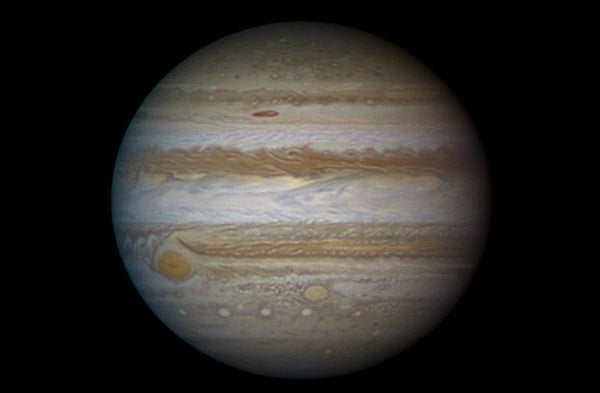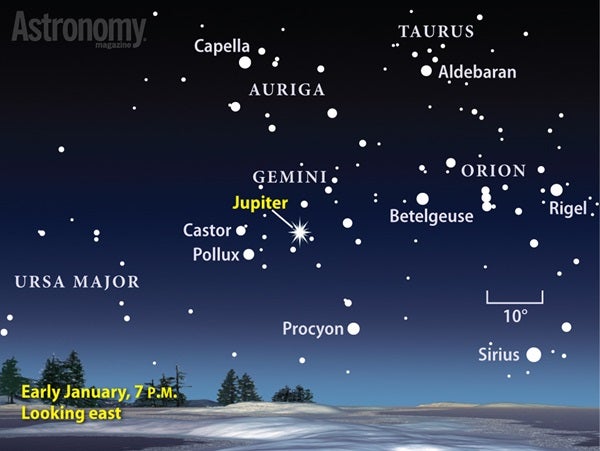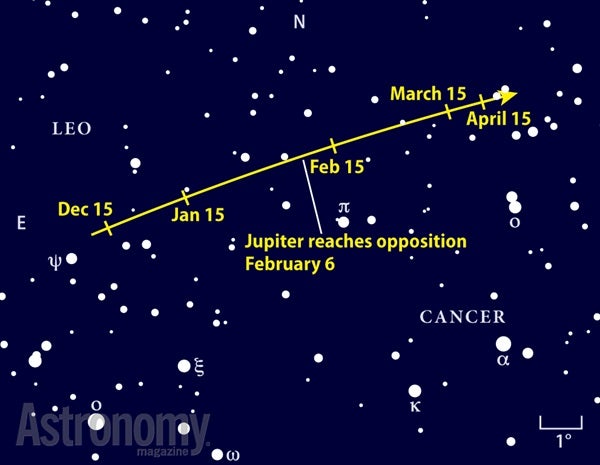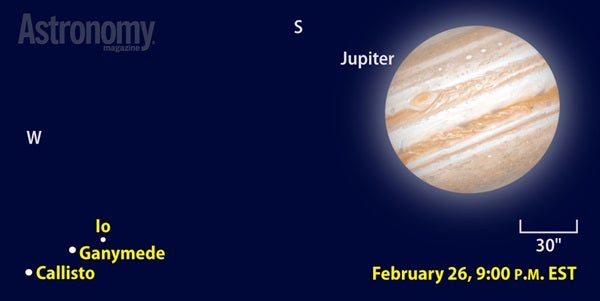Now’s the time to break out the telescope for a long look at Jupiter. The king of planets is making its closest approach to Earth, showing off its subtle features and dancing moons.
Jupiter’s return to opposition happens every 13 months and makes the gaseous giant loom its largest and brightest in our night sky. When it reaches its peak at 1 p.m. EST February 6, the planet will span 45 arcseconds (1 arcsecond equals 1/3,600 of 1°) and shine at magnitude –2.6. That places Jupiter at three times the brightness of the brightest star in the sky, Sirius. It’s easily visible by naked eye, as the only objects in the night sky that are brighter are the Moon and the planet Venus.
Opposition occurs when Jupiter lies directly opposite from the Sun as seen from Earth. That means the planet will rise at sunset and set at sunrise, placing it in the sky all night long. This alignment also puts the solar system’s largest planet highest in the sky at local midnight, where it can be seen through the least amount of Earth’s atmosphere for the best possible view. You’ll easily spot the planet about halfway between the Beehive Cluster (M44), another great binocular target in Cancer the Crab, and 1st-magnitude Regulus, the brightest star in the constellation Leo the Lion.
Jupiter’s four brightest moons, which Galileo discovered in 1610, will also be an excellent sight. These Galilean satellites — Io, Europa, Ganymede, and Callisto (in order of increasing distance from Jupiter) — seldom line up by distance. This happens on the night of opposition. Between sunset and about 2 a.m. EST, an observer can name the moons just by noting how far east of Jupiter they lie.
The satellites are easy targets in small telescopes and will put on an inspiring period of dozens of these transits, eclipses, and shadows cast on the planet through August 2015. And for those in cold climes clouded out or not willing to brave the chill, the planet will remain fantastically bright for much of the coming year.
- Video: Tour the Solar System: Jupiter, with Richard Talcott, senior editor
- StarDome: Locate Jupiter in your night sky with our interactive star chart.
- The Sky this Week: Get your planet observing info from a daily digest of celestial events coming soon to a sky near you.
- Sign up for our free weekly email newsletter.














